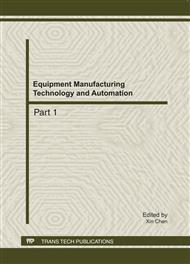p.1187
p.1193
p.1197
p.1201
p.1205
p.1211
p.1215
p.1219
p.1223
Simulation Research of Fuzzy Self-Adaptive PID Control for Fracture Trauma Section Stress
Abstract:
The stress response of fracture trauma section has certain inertia and pure lag, conventional PID control can not obtain optimal stress control accuracy. In allusion to this problem, this paper proposes using fuzzy adaptive PID control, aims at the optimal physiological stimulation stress (Jorgensen curve) in the course of fracture healing, conducts real-time control to the fracture trauma section stress. According to the established fracture trauma system model, the fuzzy self-adaptive PID controller has been designed, and conducts simulation research on real-time stress control in the Matlab/Simulink simulation environment. The simulation results show that the stress control accuracy of fuzzy self-adaptive PID control is obviously better than that of the classical PID control and classical fuzzy control, which can effectively control the stress of trauma section in fracture healing, to promote bone repair and bone growth towards the optimal level, and then to ensure the speed and quality of fracture healing.
Info:
Periodical:
Pages:
1205-1210
Citation:
Online since:
August 2011
Authors:
Price:
Сopyright:
© 2011 Trans Tech Publications Ltd. All Rights Reserved
Share:
Citation:


